Wenceslas Square (Václavské náměstí) in Prague is more than just a square—it’s a grand boulevard, a historic stage, and a cultural artery that has witnessed the Czech Republic’s most defining moments. Situated in the New Town (Nové Město), this iconic landmark has served as a marketplace, political arena, shopping haven, and symbolic meeting place for generations. Stretching 750 meters in length and about 60 meters wide, Wenceslas Square is one of the largest city squares in Europe, and it continues to be a hub of activity both day and night.
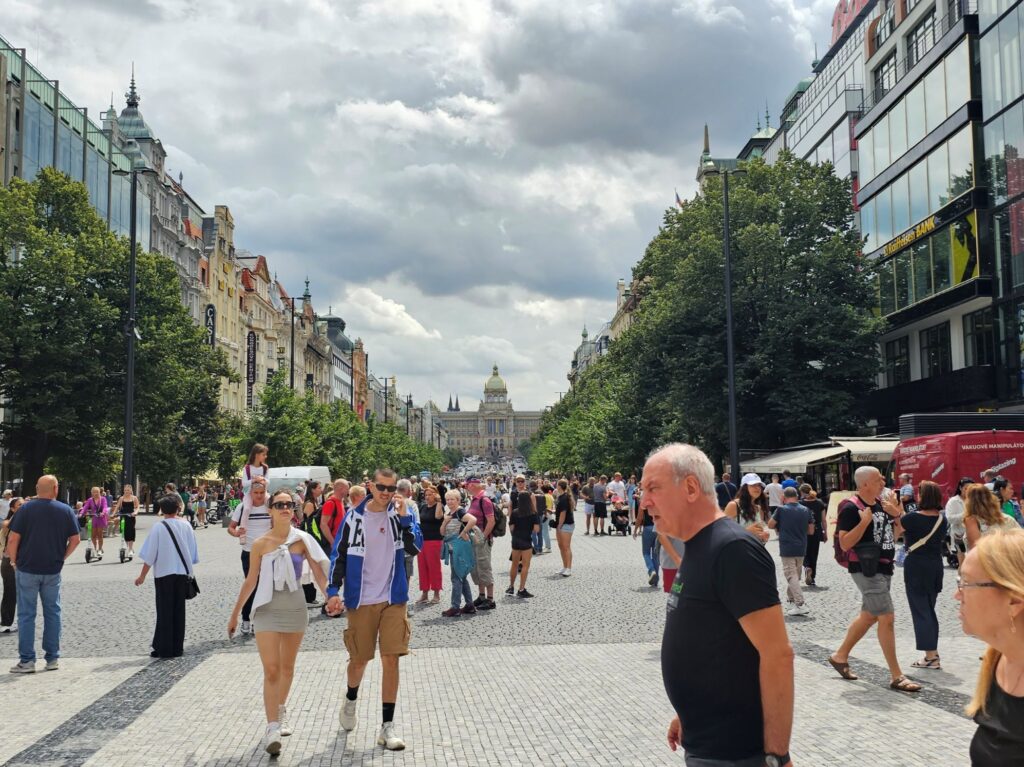
Origins and Historical Evolution
Wenceslas Square was originally laid out in 1348 by Emperor Charles IV as part of his ambitious expansion of Prague known as the New Town. Initially called the “Horse Market” (Koňský trh), the square was a bustling center for horse trading until the 19th century. In 1848, as part of the Czech National Revival, it was renamed in honor of Saint Wenceslas, the patron saint of Bohemia. Over time, the square evolved from a commercial hub to a stage for national identity, civic pride, and historical transformation.
During the Austro-Hungarian Empire, the square was a focal point for the growing desire for Czech autonomy. In 1918, the declaration of Czechoslovak independence was celebrated here. When Nazi forces occupied Prague in 1939, Wenceslas Square became the scene of resistance and mourning. After World War II, the square witnessed the rise and fall of communist rule, including the tragic self-immolation of student Jan Palach in 1969 and the triumphant gatherings during the 1989 Velvet Revolution.
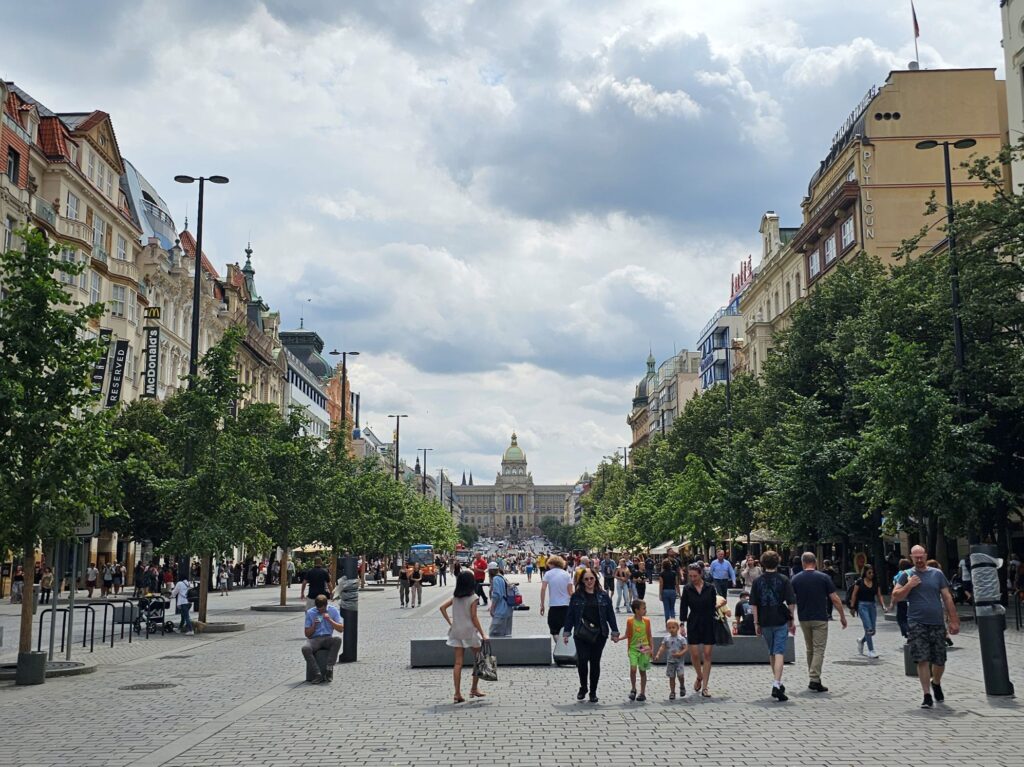
Architectural Highlights and Cultural Icons
The square is framed by impressive buildings that span architectural styles from Neo-Renaissance to Art Nouveau to Modernism. At its top stands the grand National Museum (Národní muzeum), its neo-Renaissance facade commanding attention and offering panoramic views over the square. Just in front is the equestrian statue of Saint Wenceslas, created by sculptor Josef Václav Myslbek, which has become a traditional gathering point for public demonstrations and celebrations.
Other architectural gems include the Hotel Evropa, a masterpiece of Art Nouveau architecture, and the Lucerna Palace, built by the family of Václav Havel and known for its eclectic interior, underground passage, and David Černý’s provocative hanging horse sculpture. The juxtaposition of ornate facades and modern buildings mirrors Prague’s layered identity as both a medieval city and a contemporary European capital.
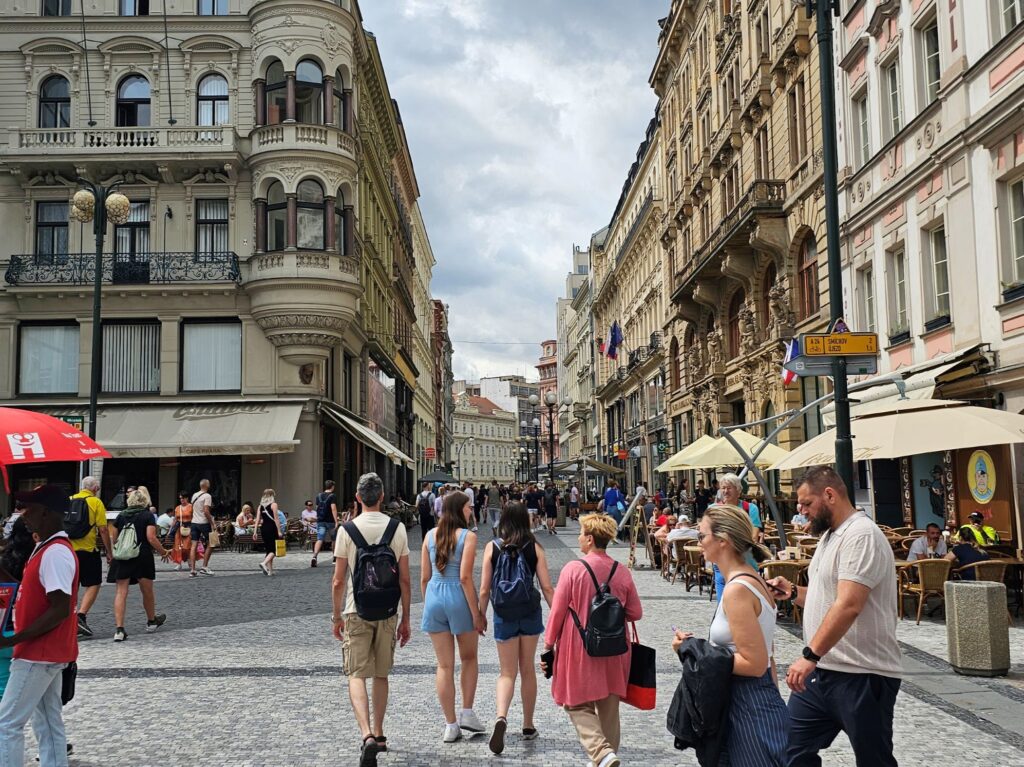
A Center of Commerce and Lifestyle
Today, Wenceslas Square is a vibrant commercial district, home to countless retail stores, shopping malls, restaurants, cafes, and entertainment venues. International brands like H&M, Sephora, and New Yorker sit alongside Czech boutiques and souvenir shops. The lower part of the square near Můstek metro station is especially bustling, while the upper part offers a slightly more relaxed vibe with bookshops, galleries, and shaded benches.
The square’s role as a marketplace has continued in spirit, if not in form. Seasonal markets, including Christmas and Easter markets, bring stalls selling handmade crafts, mulled wine, and traditional Czech foods. For visitors, the area is also ideal for accommodation due to its central location, with hotels ranging from budget to boutique and luxury options within walking distance.
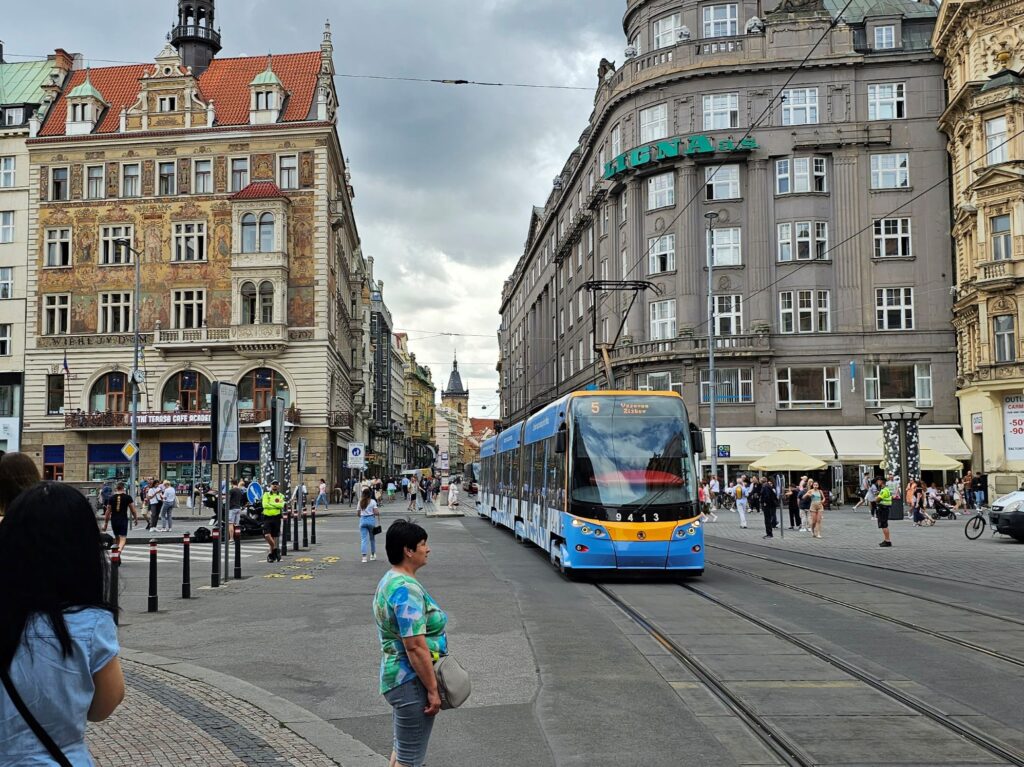
A Symbol of Protest and Unity
Wenceslas Square has long been a stage for political demonstrations and public discourse. During the Prague Spring of 1968, Czechs rallied here with hopes of reforming socialism. That dream was crushed by Soviet tanks, and in 1969, Jan Palach’s sacrifice turned the square into a site of mourning and resistance. Two decades later, it would again fill with voices of hope as the Velvet Revolution peacefully ended communist rule.
The square’s importance is underscored by its consistent role as the physical space where Czechs have gathered to express both anguish and triumph. Today, the tradition continues, with rallies for climate action, LGBTQ+ rights, and democratic values often centered here.
Experiencing the Square Today
Walking through Wenceslas Square is a sensory journey: the smell of roasted sausages from street vendors, the sound of trams rumbling nearby, and the rhythm of street musicians playing under flickering neon signs. You can take a guided tour to learn more about the square’s layered past or simply explore at your own pace. Don’t miss trying Trdelník, a cinnamon-sugar pastry sold from various stands, or grabbing a seat at one of the outdoor cafes to people-watch and soak in the atmosphere.
The Lucerna Passage is a must-visit nearby destination—an Art Nouveau complex filled with vintage shops, a cinema, and cafes. It provides a quieter, nostalgic escape just steps away from the square’s vibrant core.
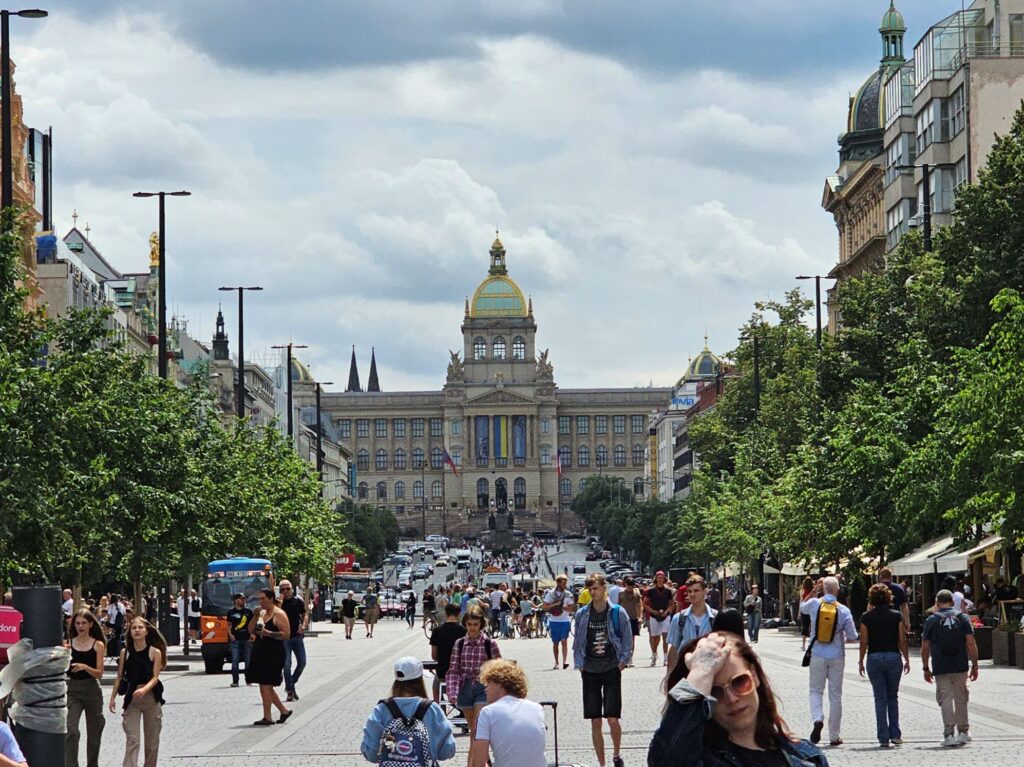
Day-to-Night Appeal
Wenceslas Square transforms beautifully as day turns to night. In the early morning, commuters and workers fill the sidewalks, while afternoons bring a blend of shoppers, tourists, and students. As night falls, the illuminated buildings and vibrant signs create a magical cityscape. The square becomes a hub for evening strolls, casual dining, or heading to a nearby theatre or cinema. For those seeking nightlife, nearby streets such as Vodičkova and Štěpánská offer popular bars and clubs.
Travel Tips for Visiting
If you’re planning to explore Wenceslas Square, wear comfortable shoes—its long expanse and adjacent streets make it a walker’s delight. The square is centrally located and easily accessible via Můstek or Muzeum metro stations. Weekends can be crowded, so weekday mornings are best for quiet exploration. While it’s generally safe, be mindful of pickpockets, especially during busy events. Don’t forget to bring a camera—the historic facades and public sculptures make for beautiful photo opportunities.
If you’re interested in history, consider visiting the nearby Communist Museum, which offers excellent exhibits on life under totalitarian rule. Also, check if there are any temporary exhibitions or cultural events at the National Museum or in the open-air plaza.
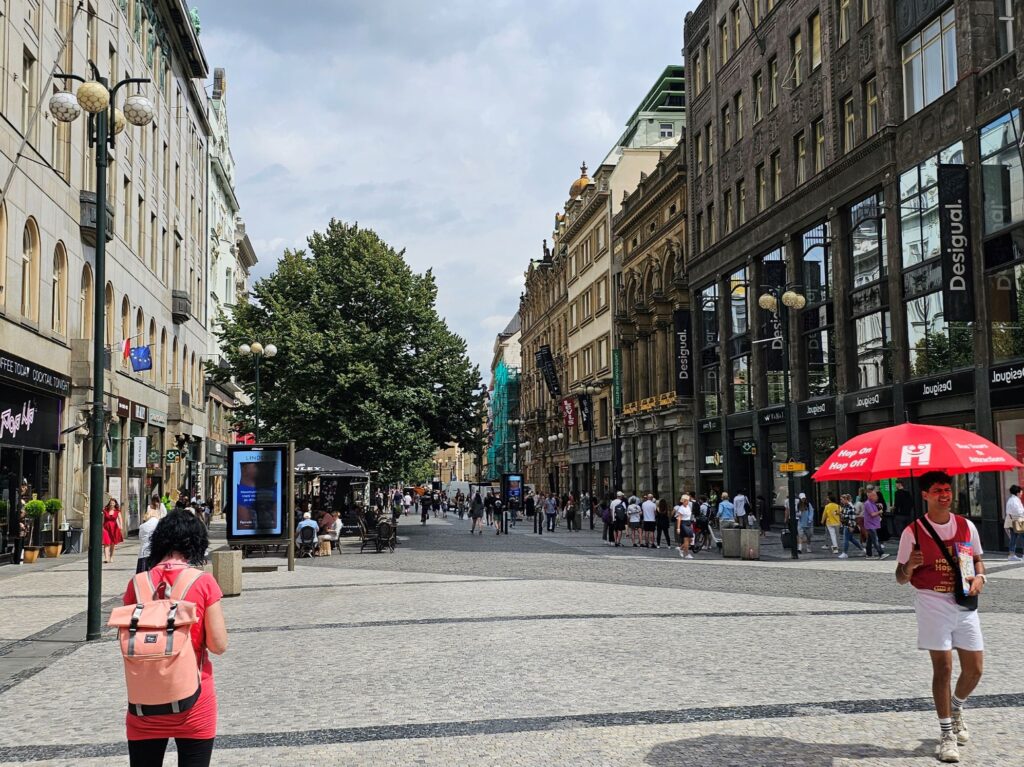
Final Thought
Wenceslas Square is more than just a central avenue—it’s the beating heart of Prague, where the past meets the present in dynamic harmony. From its historical significance to its modern-day pulse, it embodies the Czech spirit of resilience, creativity, and unity. Whether you’re here to trace the footprints of revolution or simply to enjoy a lively urban experience, Wenceslas Square invites you to be part of Prague’s ever-evolving story.
Practical Information
- Location: Václavské náměstí, Nové Město, Prague 1, Czech Republic
- Nearest Metro Stations: Můstek (Line A/B), Muzeum (Line A/C)
- Opening Hours: Open 24/7 (shops and venues have varying hours)
- Nearby Attractions: National Museum, Old Town Square, Lucerna Passage, Communist Museum
- Best Time to Visit: Spring and autumn for mild weather and fewer crowds
Restaurace U Dvou velbloudů: Where Classic Czech Flavors Shine in the Heart of Prague
Wallenstein Palace in Prague: A Baroque Gem Amid Political Power and Garden Serenity

